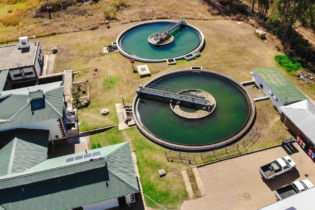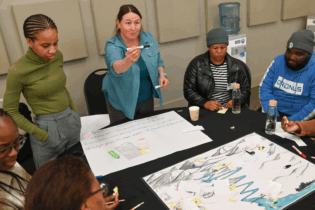According to a recent report by charities, Gaza’s only source of fresh water is contaminated with fertiliser and human waste.
The water and waste infrastructure in Gaza has been slowly deteriorating for years now. War damage, political conflict and dwindling resources are all part of the problem – however, the most troubling aspect is that there is little hope for improvement. According to the latest report by Save the Children and Medical Aid for Palestinians, Gaza’s water is too contaminated to drink and the number of children treated with diarrhoea has doubled in the last five years. The report also remarked that Israel’s five year blockade of the territory is preventing important sanitation equipment from reaching the people of Gaza. The report found that sanitation related diseases – with serious implications for child mortality, such as typhoid fever and watery diarrhoea – had increased in children under the age of three in clinics serving refugees in the Gaza Strip. In 2012 alone, three children also drowned in pools of open sewage and there were calls for an investigation to look into the causes and ways to prevent similar incidents. It is believed that just 5% of the available water in Gaza is suitable for consumption and so projects such as the desalination plant which is backed by Europe are very important. However, political wrangling and the Israeli blockade of the Gaza Strip are real barriers that such projects struggle to overcome. The report’s key recommendation was that Israel lift the blockade and allow the free movement of people and goods in and out of Gaza. The report added: “Given the direct relationship between a supply of clean water and deteriorating water and sanitation systems, on one hand, and child mortality on the other, all planned water and sanitation projects should be implemented immediately, and a clear timetable provided by the Israeli authorities for their completion.”Despite effort by locals to raise awareness of water shortage issues, such as painting water murals, little has actually changed on the ground in the last couple of years. Gazans are still struggling with poor water infrastructure and experts are now saying that little will change until the blockade of Gaza is lifted. For over five years, over 1.6 million people in Gaza have been under blockade – in direct violation of international law. And as children make up more than half of the population, the implications of this blockade on young people has been hard to ignore.
For example, despite the easing of the blockade in 2010 many families in Gaza still struggle with food insecurity and remain critically dependent on aid. The report added: “The community is torn by political disputes and critical services, including health, have been unable to recover from conflict… the environment is heavily polluted, with Gaza’s residents being squeezed into an ever-shrinking, increasingly unhealthy space with almost no clean water. It is the lack of this that makes children particularly vulnerable to the spread of diseases.” Gaza’s health sector is suffering from shortages with medical supplies and equipment in high demand. Schools and other public institutions are similarly affected although the UN is working with Italian architect Mario Cucinella to help build more sustainable and self-sufficient schools. Source:greenprophet.com






